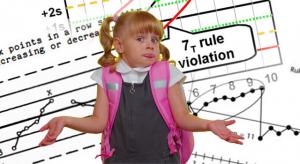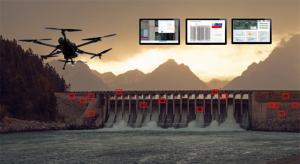All Features

Atul Minocha
Do you ever feel like you’re spending money like crazy on marketing and getting little or nothing in return? If so, you might be tempted to pull the plug on marketing altogether. That would be a big mistake.
An effective marketing strategy can mean the difference between your organization’s success…

Donald J. Wheeler
Most of the world’s data are obtained as byproducts of operations. These observational data track what happens over time and have a structure that requires a different approach to analysis than that used for experimental data. An understanding of this approach will reveal how Shewhart’s generic,…

Dr T Burns
I’m a chemical engineer. The fundamentals of the chemical engineering profession were laid down 150 years ago by Osborne Reynolds. Although chemical engineering has seen many advances, such as digital process control and evolutionary process optimization, every engineer understands and uses Reynold…

Donald J. Wheeler
On the face of it, it seems to be impossible for skewed variables to add up to a normally distributed result. Yet both common experience and mathematical theory combine to show us that this does indeed happen. In fact it is a fundamental property of probability theory which, in turn, explains the…

Donald J. Wheeler
Management requires prediction. However, when making predictions it is easy to torture the data until they surrender and tell you what you expect to hear. Even though this torture may be unintentional, it can keep you from hearing the story the data could tell. This column is about how to avoid…

W. Edwards Deming
Editor’s note: The following is from a transcript of a forgotten speech given in Tokyo in 1978 by W. Edwards Deming for the Union of Japanese Scientists and Engineers (JUSE). Because the original was a poor photocopy, there are small portions of text that could not be transcribed. Transcript…

Donald J. Wheeler
One of the most common questions about any production process is, “What is the fraction nonconforming?” Many different approaches have been used to answer this question. This article will compare the two most widely used approaches and define the essential uncertainty inherent for all of these…

Steve Moore
In this year’s April issue of the Bridge Bulletin, the ACBL (American Contract Bridge League) unveiled a new logo as part of a rebranding campaign to promote the beloved game of bridge to a wider audience. Included in the new logo is the tagline “Dealing Infinite Possibilities.” It is this tagline…

Donald J. Wheeler
First, let it be known that all charts for count-based data are charts for individual values. Regardless of whether we are working with a count or a rate, we obtain one value per time period and want to plot a point every time we get a value. This need to plot the current data is why the specialty…

Jay Arthur—The KnowWare Man
There are many control chart rules to detect special causes (i.e., out-of-control conditions). Although most of these rules are clear, the one that seems to befuddle most people is the rule about trends. Is it six points (including the first point), six points (excluding the first point), or seven…

Donald J. Wheeler
What do the shape statistics known as skewness and kurtosis tell us about our data? Last month we saw how the average and standard deviation define the balance point and radius of gyration for our data. Once we have these two quantities the empirical rule tells us where the bulk of the data should…

William A. Levinson
Part one of this article showed that it is possible, by means of a Visual Basic for Applications program in Microsoft Excel, to calculate the fraction of in-specification product that is rejected by a non-capable gage, as well as the fraction of nonconforming product that is accepted. This…

William A. Levinson
IATF 16949:2016 clause 7.1.5.1.1 requires measurement systems analysis (MSA) to quantify gage and instrument variation. The deliverables of the generally accepted procedure are the repeatability or equipment variation, and the reproducibility or appraiser variation. The Automotive Industry Action…

Saligrama Agnihothri
Health-tracking devices and apps are becoming part of everyday life. More than 300,000 mobile phone applications claim to help with managing diverse personal health issues, from monitoring blood glucose levels to conceiving a child.
But so far the potential for health-tracking apps to improve…

Donald J. Wheeler
Your software routinely gives you four descriptive statistics for your data: the average, the standard deviation, the skewness, and the kurtosis. Of these only the average is easy to understand. This article and the next illustrate what these statistics are telling you about your data.
Welcome to…

William A. Levinson
The first part of this series introduced measurement systems analysis for attribute data, or attribute agreement analysis. AIAG1 provides a comprehensive overview, and Jd Marhevko2 has done an outstanding job of extending it to judgment inspections as well as go/no-go gages. Part two will cover the…

Donald J. Wheeler
Measurement error is ubiquitous. As a result, over the past 250 years, different areas of science and engineering have come up with many different ways to deal with the problem of measurement error. One approach to the problem of measurement error was developed during the 1960s within General…

James Bossert
When we talk about measurement system analysis (MSA), people tend to focus on attribute agreement analysis because it is usually quicker and easier to do than a gauge repeatability and reproducibility (gauge R&R) study. This article is a review of the fundamentals for gauge R&R to remind us…

William A. Levinson
Measurement systems analysis (MSA) for attributes, or attribute agreement analysis, is a lot like eating broccoli or Brussels sprouts. We must often do things we don't like because they are necessary or good for us. While IATF 16949:2016, Clause 7.1.5.1.1—“Measurement systems analysis,” does not…

Ryan McKenna
To date, this series focused on relatively simple data analyses, such as learning one summary statistic about our data at a time. In reality, we’re often interested in a slightly more sophisticated analysis, so we can learn multiple trends and takeaways at once and paint a richer picture of our…

Donald J. Wheeler
For more than 40 years it has been common to use the precision to tolerance ratio (P/T ratio) to compare the standard deviation of measurement error with the specified tolerance for a particular product. The purpose of this comparison being an assessment of the utility of the measurement process.…

David Darais, Joseph Near
In our last article, we discussed how to determine how many people drink pumpkin spice lattes in a given time period without learning their identifying information. But say, for example, you would like to know the total amount spent on pumpkin spice lattes this year, or the average price of a…

Donald J. Wheeler
In my article, “Tightened 100% Inspection” (Quality Digest, March 29, 2021), we found that the excess costs associated with tightened specification limits are generally prohibitive. Here we consider the question: “Under what conditions can we use tightened specifications without incurring undue…

David Darais, Joseph Near
How many people drink pumpkin spice lattes in October, and how would you calculate this without learning specifically who is drinking them, and who is not?
Although they seem simple or trivial, counting queries are used extremely often. Counting queries such as histograms can express many useful…

Donald J. Wheeler
Inspection sounds simple. Screen out the bad stuff and ship the good stuff. However, measurement error will always create problems of misclassification where good stuff is rejected, and bad stuff gets shipped. While guard-bands and tightened inspection have been offered as a way to remedy the…